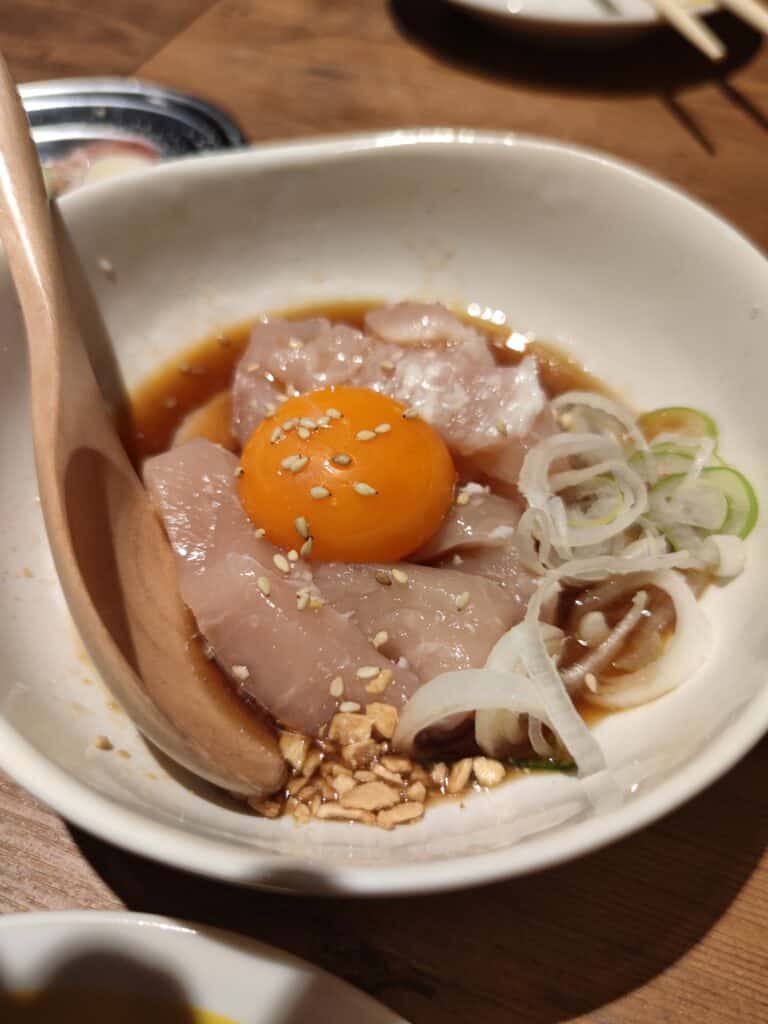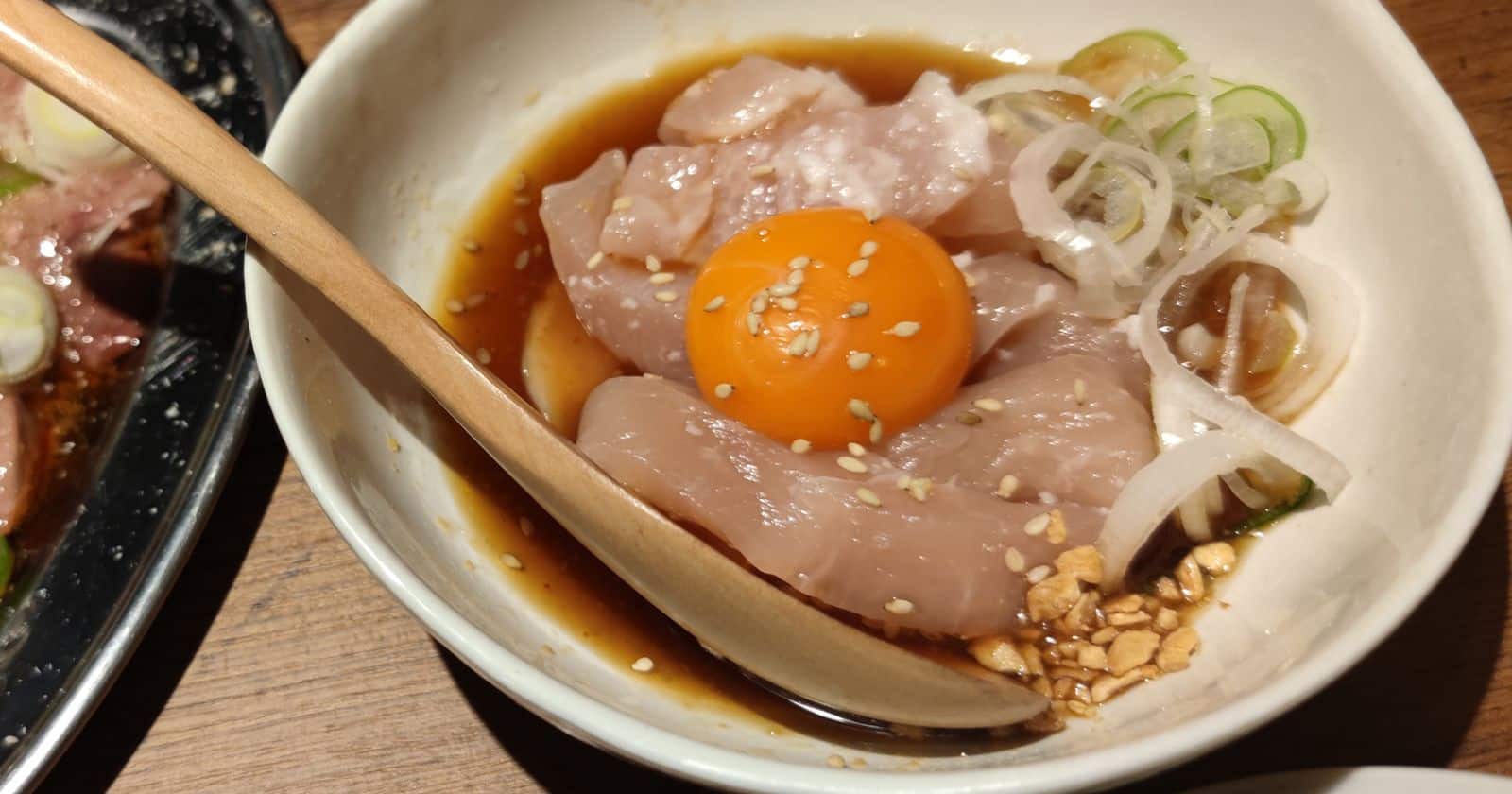Many people love eating raw food, and Japanese cuisine takes this game seriously as they offer a variety of raw dishes, including raw chicken. In Japan, people enjoy eating a raw chicken dish called “Torisashi” or “Chicken Sashimi.” This dish is typically made from the inner breast of the chicken and is said to be the part with the lowest risk of salmonella contamination.
Is it safe to eat raw chicken in Japan? The short answer is yes, but only if properly handled and prepared. The biggest concern when eating raw chicken is the risk of food poisoning caused by bacteria like salmonella or E. coli. As a result, ensure that the chicken is of high quality, stored and handled correctly, and that all surfaces and utensils are sanitized before use.
This article will discuss preparing raw chicken in Japan and whether it is safe to eat.
Why do the Japanese eat raw chicken?
The Japanese have eaten raw chicken since the Edo period (1603-1868). During this time, it was first served as a type of sashimi. Over time, the practice evolved into various dishes like torisashi and tori yukke.
Raw chicken is an important part of Japanese cuisine and cultural heritage. It is seen as a way to preserve and celebrate the country’s culinary traditions and a symbol of its food culture and attention to detail.

Not only raw chicken, but other dishes like raw beef, raw deer, raw goat, raw horse, raw egg, and fish – like tuna, salmon, and sea bass – are also commonly served in Japan. You can find the raw dish in many restaurants, as it is a favorite for locals and visitors alike.
This day Torisashi and Tori yukke are widely enjoyed in Japan, particularly in traditional izakaya (Japanese pubs) and high-end restaurants. The popular dishes are also enjoyed by tourists visiting Japan, as they offer a unique and authentic culinary experience.
Here are some raw chicken dishes you can find in Japan:
Torisashi

Torisashi is a dish of raw chicken served on a bed of shredded daikon (Japanese radish) and garnished with green onion and fish roe. The chicken is cut into thin slices, lightly marinated in soy sauce, and served immediately for the best flavor.
Some restaurants grill the chicken skin for a few seconds to give it a slightly smoky flavor.
Tori yukke

Like others yukke dishes, tori yukke is a raw meat dish made with marinated chicken. The chicken is cut into bite-sized pieces and marinated in soy sauce, sugar, mirin (sweet rice wine), and sesame oil. It’s usually served with grated daikon radish and shiso (perilla) topped with raw egg yolk.

My friends in Tokyo recommended the restaurant Shinjidai. It’s izakaya-style, where you can try Tori yukke (480 yen) and other raw dishes without banging your wallet too much.
They told me that it is a staple dish that everyone in Japan tries at least once! The taste is mild and subtle, so it goes well with some sake or beer. And you can see other restaurant guests enjoying the same dish while having drinks.
Is it safe to eat raw chicken in Japan?
It is safe to eat raw chicken in Japan as long as it is of high quality, stored and handled correctly, and all surfaces and utensils are sanitized before use. The biggest concern when eating raw chicken is the risk of food poisoning caused by bacteria like salmonella or E. coli.
For this reason, it’s important to purchase raw chicken dishes from well know, trustworthy restaurants, as they are more likely to use high-quality ingredients and strict safety standards when preparing chicken.
This raw chicken is typically thinly sliced or cubed from the inner breast of the chicken and is said to be the part of the chicken that carries the lowest risk of salmonella contamination
However, while it may be low risk, there is still the potential for contamination, and eating raw meat, in general, is not considered safe by many food safety experts. To mitigate these risks, many Japanese restaurants that serve chicken sashimi claim to use organic chickens from small, controlled farms instead of large poultry farms.
The Ministry of Agriculture, Forestry and Fisheries in Japan take the risk of foodborne illnesses very seriously, and they have stringent regulations to ensure that chicken is safe to consume. You can’t even import processed food from other countries into Japan without permission.
Therefore, while there is an inherent risk when eating raw chicken in Japan, it is manageable and can be done safely if proper precautions are taken.
Nutritional benefits of eating raw chicken
Eating raw chicken offers many nutritional benefits as it is rich in protein, vitamins, and minerals. It contains selenium, an essential nutrient for the immune system, and can help reduce inflammation.
However, the benefits of eating raw chicken differ when cooked. The same vitamins, minerals, and proteins are present in cooked chicken. Therefore, it is best to choose the preparation style that fits your preference. If you decide to fry, grill, or bake your chicken, you may find it less juicy than raw chicken but still preserves its nutritional value.
Beware of some added calories when cooking chicken; oil or butter can increase your calorie count.
Final words
Raw chicken dishes like Torisashi and Tori Yukke are an authentic part of Japanese cuisine, with a unique flavor unrivaled by other dishes. While the risk of contamination can never be entirely eliminated, taking proper precautions when consuming raw chicken can significantly reduce the chance of food poisoning.
If you like to eat raw food and experience the authentic flavors of Japanese cuisine, these raw chicken dishes are a must-try. But if you’re more of a fan of cooked dishes, there are plenty of options for that as well.
I like raw food and found out that eating raw food in Tokyo is relatively safe. As long as we take the necessary precautions, there’s no reason why we can’t enjoy these traditional dishes safely. Bon appetite!
In either case, always choose restaurants with high-quality ingredients and strict safety protocols to ensure the best eating experience. Bon appetite!





